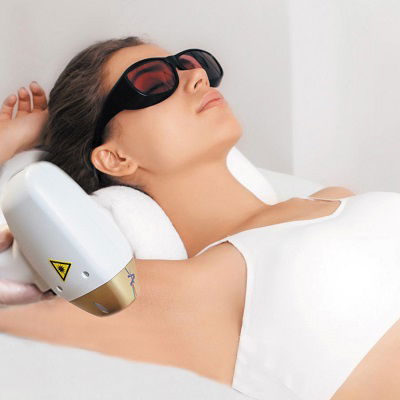Can You Get a Tan After Laser Hair Removal?
When considering laser hair removal in Oman, many people wonder about the impact of tanning on their treatment. Laser Hair Removal Oman is a popular choice for achieving smooth, hair-free skin, but it’s essential to understand how your skincare routine, including tanning, might affect the results and safety of the procedure. This article delves into what you need to know about getting a tan after undergoing laser hair removal.

Understanding Laser Hair Removal
How Laser Hair Removal Works
Laser hair removal uses concentrated light to target and destroy hair follicles. This process effectively reduces hair growth over time by damaging the follicles' ability to produce new hair. It's a popular choice in Oman due to its effectiveness and long-term results.
The Importance of Pre-Treatment Preparation
Before undergoing laser hair removal, it’s crucial to prepare your skin properly. This includes avoiding direct sun exposure and tanning. Tanned skin can affect the laser's ability to target the hair follicles accurately and may increase the risk of side effects such as burns or hyperpigmentation.
Can You Tan After Laser Hair Removal?
Immediate Post-Treatment Care
After laser hair removal, your skin may be sensitive, and it’s advised to avoid tanning for at least two weeks. The skin needs time to heal and recover from the treatment. Exposure to UV rays can irritate the treated area and lead to complications.
Risks of Tanning Post-Treatment
Increased Risk of Pigmentation
Tanning after laser hair removal can increase the risk of pigmentation changes. The treated area may develop dark spots or uneven skin tone, which can be challenging to correct. To avoid this, it’s best to keep the treated skin protected from the sun and refrain from tanning.
Potential for Burns
Tanned skin absorbs more light energy than untanned skin. When exposed to laser treatments, this can result in burns or other adverse reactions. If you wish to tan, ensure you wait until your skin has fully healed from the laser hair removal treatment.
Alternative Options for Maintaining a Healthy Glow
Self-Tanners and Bronzing Products
If you want to maintain a tan or glow after laser hair removal, consider using self-tanners or bronzing products. These are a safe alternative to direct sun exposure and won’t interfere with your laser hair removal results. Be sure to choose products that are suitable for your skin type and follow the application instructions carefully.
Using Sunscreen and Protective Clothing
To protect your skin from UV damage and maintain its health after laser hair removal, apply a broad-spectrum sunscreen with at least SPF 30 daily. Wearing protective clothing, such as hats and long sleeves, can also help shield your skin from the sun’s harmful rays.
Post-Treatment Skin Care Tips
Hydration and Moisturization
Keeping your skin hydrated is essential after laser hair removal. Use a gentle, fragrance-free moisturizer to soothe and hydrate your skin. Proper moisturization can aid in the healing process and reduce the risk of irritation.
Avoiding Hot Showers and Saunas
For at least a week after your treatment, avoid hot showers, saunas, and other activities that can increase skin sensitivity. Opt for lukewarm water and gentle cleansers to avoid further irritation.
Long-Term Maintenance and Care
Scheduling Follow-Up Treatments
To achieve the best results from your laser hair removal in Oman, it’s essential to follow up with additional treatments as recommended by your practitioner. Regular sessions will help ensure that all hair follicles are effectively treated and reduce the likelihood of hair regrowth.
Monitoring Skin Changes
Keep an eye on any changes to your skin, such as unusual redness or pigmentation. If you notice anything concerning, consult with your skincare professional. They can provide guidance on how to address any issues and maintain healthy skin.
Conclusion
In summary, while laser hair removal is an effective method for long-term hair reduction, it’s crucial to manage your tanning practices carefully to avoid complications. Following the post-treatment care guidelines and protecting your skin from UV exposure will help ensure the best results from your laser hair removal sessions in Oman. Always consult with a professional to tailor your skincare routine to your specific needs and ensure optimal outcomes.
